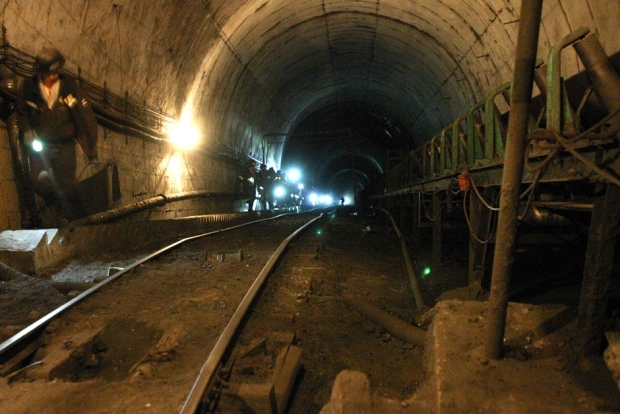It is an inescapable truth that China needs coal—and that coal needs water. The coal industry, from mining to power generation and coal-to-chemicals, accounts for one-sixth of China’s water withdrawals. This is not sustainable and in some areas coal mining is already constrained. We believe China can achieve water sustainability in coal by adopting energy efficient growth policies and better technologies. If not, increasing coal-related water withdrawals will further constrain growth.
China has around 15,000 coal mines, with roughly 70% located in water-scarce regions; 40% are estimated to have severe water shortages, especially in the north of the country. In some areas, coal production, especially at smaller mines, is already hampered by a lack of water.
In coal mining, water is predominantly used for cooling equipment, reducing dust levels, washing tunnels and extinguishing fires. In China, around 95% of coal is mined underground, so the process can damage aquifers as water is often pumped to the surface to avoid creating fissures, which can be dangerous for miners. If water from aquifer drainage is added to the amount used in regular mine operations, water withdrawals per ton of coal mined could be up to nine times higher.
Coal is washed to improve its quality before being burned for power. The washing process reduces the levels of ash and sulphur, improving the energy content. It also reduces the weight of coal that needs to be transported and requires less desulphurization by the power industry—a process which uses some of the power generated (an example of parasitic power loss).
Wet washing coal in China has its disadvantages. For example, much of the coal is young in geological terms and degrades quickly in water, making it unsuitable for this process. Also, in winter, the cold temperatures in northern China increase the risk of freezing, which means that some coal cannot be washed. Despite these disadvantages, roughly 94% of coal washing in China is wet-washed because it is more effective at removing dust than dry methods.
Last year, 75% of China’s power generation came from coal. As a result, coal-fired power generation accounts for half of all the coal consumed in China. Well over 90% of China’s thermal power plants use water-cooling. Once up and running, most of the water remains in the power station and is recirculated; however, around 12% is lost through evaporation, implying that the system needs to be completely replenished every eight years.
It is possible to use dry cooling—using air—which requires less than a tenth of the water of a wet-cooled plant. By the end of 2010, only 5% of power generation in China involved dry cooling, all in water-scarce regions such as the northern provinces. Air cooled power plants are more expensive to build and incur parasitic power loss since they typically require around 10% of the energy produced to power the large fans.
China’s energy consumption is expected to increase substantially over the coming decades and much of this will be coal-fired. As such, it will have to make substantial technological progress in using water more efficiently throughout the coal chain. In addition, we believe using more renewable energy could help to save water since wind and solar power generation requires virtually no water.
About 80% of China’s ammonia production is produced synthetically from coal. China’s embryonic coal-to-chemicals industry also uses coal to produce coke for use as a reduction agent in steel making and other metallurgical processes.
China is expanding its coal-to chemicals capacity rapidly and, surprisingly, newer coal-to-chemical plants tend to be more water-intensive than older plants. As a result, water usage by this segment of industry may increase, although the overall level of usage is small relative to other parts of the coal chain.
The coal sector saw substantial volume growth over the last decade but growth rates are likely to slow. This is already happening as coal companies shift their strategy from growth to integration.
Investment decisions in the coal sector—whether by companies, investors or lenders—will increasingly have to factor in water-related risks. Anyone investing in or lending to a coal project today needs to know whether it may be water-constrained during the life of the project, be it in ten or twenty years. Increasing emphasis would have to be spent on assessing water risks.
Although China’s coal industry is a significant user of water and operates predominantly in water-scarce areas, many operations are still water-inefficient. There is much room for improvement; the Chinese government is well aware of the risks it faces in light of water shortages and is intent on driving more energy efficiency as well as water efficiency as it pursues “sustainable” growth.




